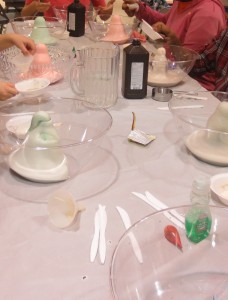My daughter and I attended a homeschool gathering this past week, and they made these cool little hovercrafts out of balloons and cds. My daughter loved watching this move across the tabletop as the air leaked out. This is a great experiment for young kids, as well as older kids. It’s super easy to put together, and only takes a few minutes to make.
What you need:
- An old CD or DVD
- A 9” balloon
- A pop-top cap from a liquid dish soap bottle
- A hot glue gun
Experiment:
- Use the hot glue gun to glue the cap to the center of the CD or DVD disc. Create a good seal to keep air from escaping.
- Make sure the valve on the pop-top bottle cap is open. Attach the balloon to the pop-top bottle cap.
- Turn the CD/DVD over to the flat side and put the center of the CD/DVD to your mouth and blow up the balloon all the way. Close the valve of the pop-top bottle cap so the air will not escape.
- When your ready to test it out, simply put the craft on a smooth surface and open the valve on the bottle cap. Air will start to leak out, causing the hovercraft to move.
Observations:
Have the kids discuss what happened once they set the hovercraft on the tabletop with the air leaking out. Did the size of the balloon make a difference? Have the kids play around with blowing up their balloons at various sizes to see how this may alter the outcome.
The air flow created by the balloon causes a cushion of moving air between the CD/DVD disc and the surface. This lifts the CD/DVD and reduces the friction which allows the disc to hover freely. Kids tend to think this is pretty cool to see.
You can show them examples of large scale hovercrafts on the internet or in a book. Large scale hovercrafts are capable of traveling over land, snow and water. Let them compare their small scale hovercraft to a large scale hovercraft.





